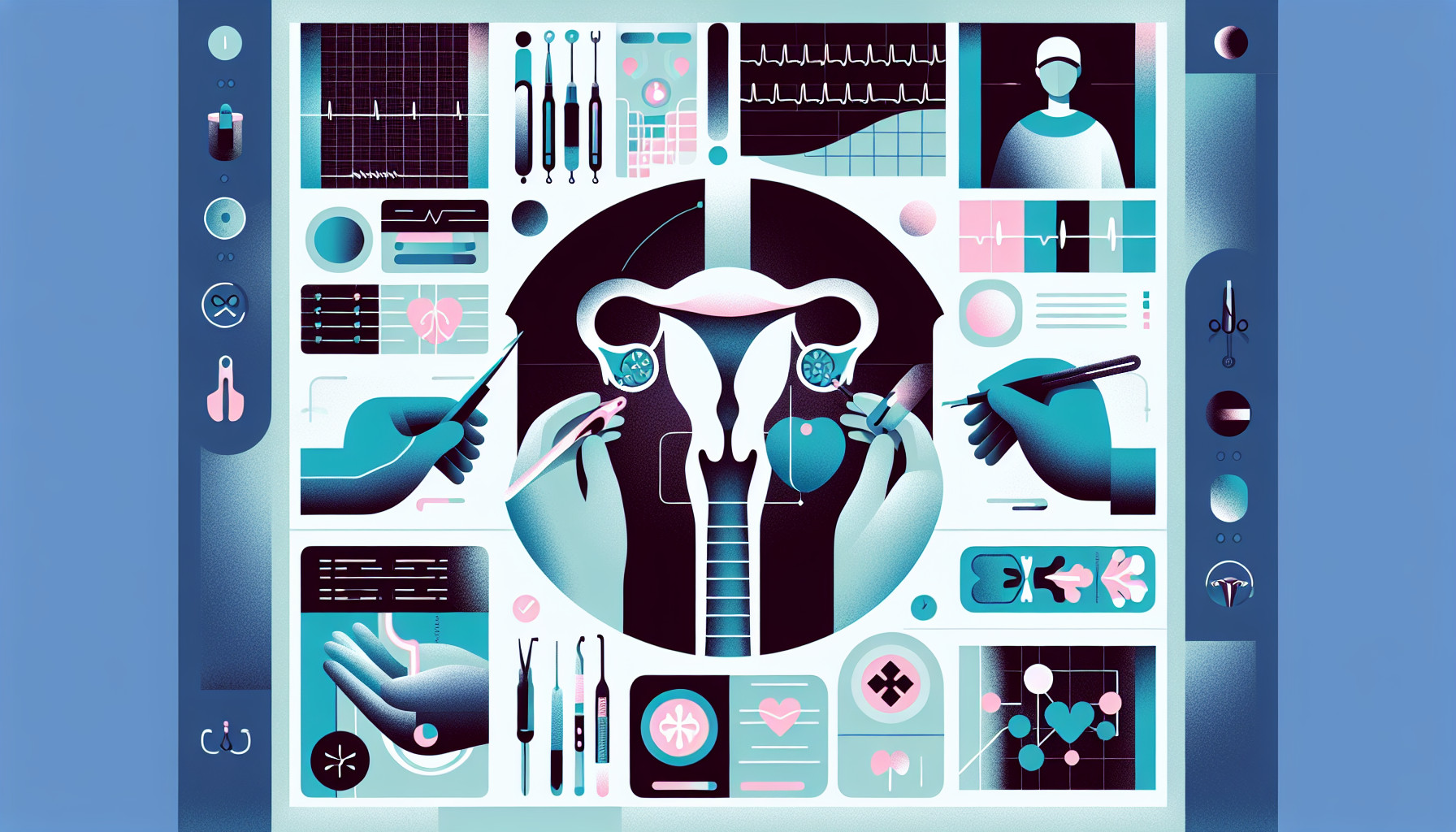Our Summary
Uterine fibroids are the most common non-cancerous growths in a woman’s uterus, often presenting with symptoms like abnormal bleeding, pelvic pain, and fertility issues. About a third of women with fibroids need treatment. This paper reviews all the current treatment options available.
The goal of fibroid treatment today is to control symptoms while preserving the patient’s ability to have children in the future. The choice of treatment depends on factors like the patient’s age, their desire to have children, and the number, size, and location of the fibroids.
Most of the current treatment strategies involve surgery. Surgical procedures can include removing the uterus (hysterectomy), removing the fibroids (myomectomy), or using less invasive techniques that can be done using radiology or ultrasound guidance. These can involve blocking the blood supply to the fibroids (uterine artery embolization and occlusion), destroying the fibroids with cold or heat (myolysis), using focused ultrasound waves to destroy the fibroids (magnetic resonance-guided focused ultrasound surgery), using radiofrequency energy to destroy the fibroids (radiofrequency ablation), or destroying the lining of the uterus (endometrial ablation).
Medical treatments for fibroids are limited and usually used for short-term control of bleeding caused by fibroids. These can involve hormones like progestogens, combined oral contraceptives and gonadotropin-releasing hormone agonists and antagonists. Recently, a new type of drug called SPRMs has been shown to reduce both bleeding and fibroid size when used intermittently over the long term.
New medical treatments are still being investigated but show promise. Ultimately, the treatment of fibroids should be tailored to the individual based on their symptoms and their desire for definitive treatment or to preserve fertility.
FAQs
- What are the current treatment options available for uterine fibroids?
- How does the choice of treatment for uterine fibroids depend on a patient’s age, fertility, and the characteristics of the fibroids?
- What are some of the new medical treatments for fibroids that are currently under investigation?
Doctor’s Tip
One helpful tip a doctor might tell a patient about endometrial ablation is to expect some cramping and light bleeding or discharge for a few days after the procedure. It is important to follow the doctor’s post-procedure instructions and to contact them if there are any concerning symptoms or complications. Endometrial ablation is a minimally invasive procedure that can help reduce or eliminate heavy menstrual bleeding, but it may not be suitable for all patients, so it is important to discuss all treatment options with your doctor.
Suitable For
Patients who are typically recommended endometrial ablation are those who have abnormal uterine bleeding, which may be caused by conditions such as uterine fibroids. Endometrial ablation is a minimally invasive procedure that can be used to treat excessive menstrual bleeding and is often recommended for women who do not wish to have children in the future. It is important for patients to discuss their symptoms and treatment options with their healthcare provider to determine if endometrial ablation is the right choice for them.
Timeline
Before endometrial ablation:
- Patient experiences symptoms such as heavy menstrual bleeding, pelvic pain, and pressure due to uterine fibroids.
- Patient consults with a healthcare provider to discuss treatment options.
- Various treatment modalities are considered, including surgical interventions such as hysterectomy or myomectomy, minimally invasive procedures like uterine artery embolization or radiofrequency ablation, and medical treatments such as progestogens or GnRH agonists.
- Patient and healthcare provider decide on the most appropriate treatment plan based on the patient’s age, fertility desires, and the size and location of the fibroids.
After endometrial ablation:
- Patient undergoes the endometrial ablation procedure, which involves destroying the uterine lining to reduce or stop menstrual bleeding.
- Recovery period post-procedure, which may involve mild cramping and discharge.
- Patient experiences a reduction in menstrual bleeding and symptoms associated with uterine fibroids.
- Follow-up appointments with the healthcare provider to monitor the effectiveness of the procedure and address any concerns or side effects.
- Patient may resume normal activities and enjoy a better quality of life without the burden of heavy menstrual bleeding.
What to Ask Your Doctor
What are the potential risks and benefits of endometrial ablation for treating my uterine fibroids?
How does endometrial ablation work to treat fibroids, and what can I expect during the procedure?
Are there any specific criteria or factors that make me a good candidate for endometrial ablation as a treatment option for my fibroids?
What is the success rate of endometrial ablation in treating fibroids, and how long do the effects typically last?
Are there any potential side effects or complications associated with endometrial ablation that I should be aware of?
Will I still be able to have children after undergoing endometrial ablation for fibroids?
Are there any alternative treatment options for my fibroids that I should consider before deciding on endometrial ablation?
How soon can I expect to see improvement in my symptoms after undergoing endometrial ablation for fibroids?
Will I need to undergo any follow-up appointments or procedures after having endometrial ablation for my fibroids?
Are there any lifestyle changes or precautions I should take after undergoing endometrial ablation for fibroids to ensure the best possible outcome?
Reference
Authors: Micić J, Macura M, Andjić M, Ivanović K, Dotlić J, Micić DD, Arsenijević V, Stojnić J, Bila J, Babić S, Šljivančanin U, Stanišić DM, Dokić M. Journal: Medicina (Kaunas). 2024 May 26;60(6):868. doi: 10.3390/medicina60060868. PMID: 38929485
